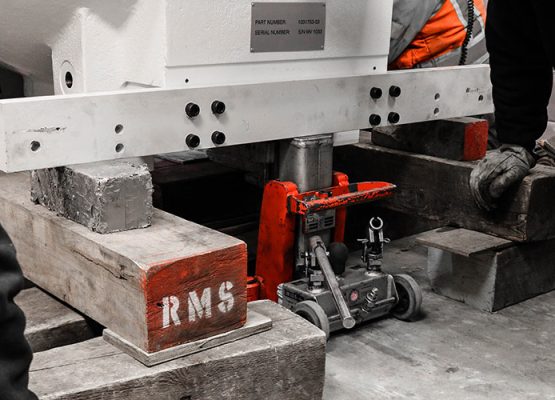Rigging Inspection & Maintenance Tips

- August 28, 2024
Rigging Inspection & Maintenance Tips
Rigging equipment is critical in various industries, from construction and manufacturing to shipping and entertainment. As a leading provider of rigging solutions, RMS Cranes emphasizes that regular inspection is crucial for compliance and the safety and efficiency of your operations. That is why we have compiled some rigging inspection and maintenance tips to help make the process as simple as possible.
1. Establish a Regular Inspection Routine
Setting up a regular schedule for inspecting your rigging equipment is vital. This means checking the gear before each use and conducting more thorough inspections at regular intervals. The frequency in which inspections are performed will depend on how often the equipment is used and the conditions it is exposed to. Regular inspections can help catch any issues early, preventing accidents and ensuring the equipment remains safe.
2. Conduct Visual Checks
Visual inspections are simple but crucial. Make sure to look closely at all parts of the rigging gear, including hooks, shackles, ropes, slings, and chains. Check for signs of wear, corrosion, cracks, or any damage that could weaken the equipment. It is also important to ensure that load capacity markings are clear and legible. Any defects or concerns should be addressed promptly to avoid potential failures during use.
3. Perform Load Tests
Load testing is another crucial aspect of rigging equipment maintenance. It involves applying loads to the equipment to ensure it can handle the intended weights safely. Load tests should be conducted periodically and whenever there are significant changes in equipment use or after repairs. Properly conducted load tests ensure that the equipment meets safety standards and can perform as expected during lifting operations.
4. Proper Lubrication and Cleaning
Keeping rigging equipment well-lubricated is essential for smooth operation and preventing corrosion. Use the lubricants recommended by the equipment manufacturer and apply them to moving parts like pulleys, sheaves, and bearings. Regularly clean the equipment to remove dirt, debris, and contaminants that could cause wear or damage over time. Proper lubrication and cleaning will help extend the lifespan of rigging gear and ensure it operates efficiently.
5. Training and Competency
Ensure that personnel involved in rigging operations are adequately trained and competent. Training should cover safe rigging practices, equipment operation, inspection procedures, and emergency protocols. Competent personnel are better equipped to identify potential hazards, conduct thorough inspections, and take corrective actions when needed. Ongoing training and skill development are essential for maintaining a safe work environment and preventing accidents related to rigging operations.
If you would like to learn more about our crane services, do not hesitate to contact the RMS Cranes team. You can reach us at 1-800-588-7095 or by completing our online Contact Form. We look forward to sharing all the information you need regarding our offerings.
Related Blogs

- February 18, 2018
CT Scanner
CT Scanner | Lone Tree, CO On February 18, 2018 RMS Rigging was contracted to move.

- December 28, 2024
What do Riggers do?
Understanding the Role of a Rigger Riggers are essential workers in many industries, such as construction.

